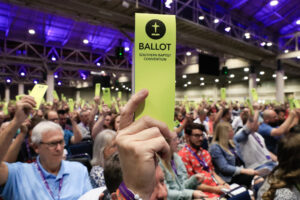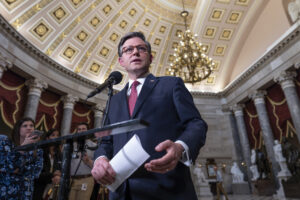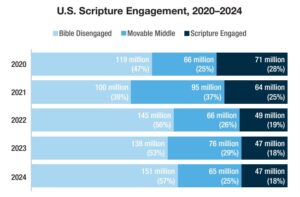
BIRMINGHAM, Ala. (BP)–Silent Night,” the carol that briefly stopped World War I, is one of the most recognizable Christmas songs and one of the most popular pieces of holiday music. During December it can be heard in malls, churches and concert halls around the planet. Ironically, the world might never have had this piece of music had it not been for a last-minute crisis at a church in the tiny village of Oberndorf, Austria.
The year was 1818 and within the Church of St. Nicholas the mood was hardly one of joy that Christmas Eve afternoon. Curate Joseph Mohr, 26, had just discovered that the organ was badly damaged. No matter how much he tried to pump the pedals, he could only bring out a scratchy wheeze from the aged instrument.
By the time an organ repair specialist could reach the church Christmas would long be over. To the young pastor, a Christmas without music was unthinkable and unacceptable.
Mohr had a natural talent for music. As a youth he earned money singing and playing the guitar and violin in public. He put himself through the university with money he earned as a music performer. His academic ability and musical talents captured the attention of a clergyman who persuaded Mohr to enter the seminary. Ordained as a priest in 1815, Mohr was assigned to Oberndorf in 1817. There he not only preached well but surprised parishioners by occasionally leading worship while strumming his guitar.
Now faced with a Christmas crisis, Mohr realized the only music for that evening would be accompanied by guitar.
He also knew the traditional Christmas carols would not sound right on his stringed instrument, so he decided to produce something new. Thinking about Jesus’ modest birth almost 1,900 years earlier, Mohr began writing “Silent Night.” Using simple phrases, the young cleric felt inspired as he retold the story of Christ’s birth in six short stanzas.
For the music, Mohr turned to Franz Gruber, a friend who was a more skilled composer than he. Gruber was a teacher in nearby Arnsdorf. Mohr visited Gruber and his large family in their modest living quarters above the school where Mohr explained his dilemma. Handing over the six stanzas, Mohr asked if Gruber could compose music to be accompanied by guitar in time for that evening’s midnight mass. According to historians who pieced together the story, Gruber was struck by the innocence and beauty of Mohr’s words.
Quickly, he went to work on the musical composition.
With barely time for a rehearsal, the two agreed that Mohr would play his guitar and sing tenor while Gruber sang bass. Following each stanza, the church choir would join in on the refrain. At midnight, parishioners filled St. Nicholas Church expecting to hear the organist playing resounding notes of Christmas music.
Instead, their church building was silent. Father Mohr explained their church organ was “down” but that midnight mass would include new music prepared especially for the congregation. With Mohr strumming the guitar, two voices sang and were joined by the choir in four-part harmony.
Father Mohr proceeded with the evening celebration of the mass.
Even without their organ, parishioners felt they had experienced a unique and memorable Christmas Eve service.
The story of “Silent Night” almost ended that evening as Mohr put the music away with no thoughts of using it again. After all, it was simply a stop-gap solution for a temporary problem. Father Mohr was transferred to another parish, and for several years “Silent Night” was never sung.
The organ at St. Nicholas continued to have problems and in 1825 the parish was forced to hire a master organ builder — Carl Mauracher — to reconstruct the instrument. Mauracher discovered the music left behind by Mohr and Gruber.
Its universal simplicity impressed the organ builder and he asked permission to make copies of “Silent Night.”
With permission given, Mauracher began introducing the carol to musicians and audiences, all of whom were enchanted by the piece.
Although the carol was making an enormous stir across Europe, Gruber and Mohr remained unaware of the accolades their music was creating.
Penniless, Mohr died of pneumonia in 1848 at the age of 55. He never learned his song was spreading around the world.
On the other hand, Gruber first heard of the carol’s success in 1854 when the concertmaster for King Frederic William IV of Prussia began searching for its authors. When word reached Gruber, then 67, he sent a letter to Berlin telling the origin of the song.
At first, few musical historians believed the two men from obscure villages could have developed such an exquisite piece of music.
When Gruber died in 1863, his authorship was still challenged, although questions gradually ceased as historians confirmed that Gruber and Mohr were indeed the authors.
–30–














